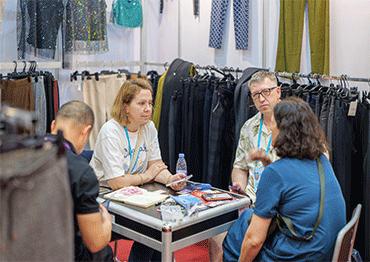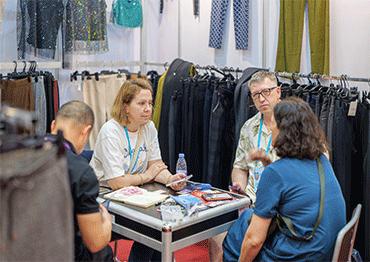After more than a month of tit-for-tat measures in the escalating China-US trade war following US President Donald Trump’s announcement of “Liberation Day” tariffs on April 2, both sides have engaged officially with each other. In a meeting in Switzerland on May 12 between trade representatives from the two countries, China and the US agreed to temporarily roll back reciprocal tariffs for 90 days, though levies imposed before April 2 remain untouched.
According to a joint statement released by the two sides, the US will lower its April-imposed surcharge on Chinese goods from 145 percent to 30 percent for 90 days, including the existing 20 percent tariffs relating to fentanyl and a broader 10 percent blanket levy. China, in turn, will reduce tariffs on most US imports from 125 percent to 10 percent, while keeping retaliatory tariffs on select goods issued in response to the US fentanyl-related tariffs.
The two sides also agreed to establish “a mechanism to continue discussions about economic and trade relations,” led by Chinese Vice Premier He Lifeng and on the US side, Treasury Secretary Scott Bessent and US Trade Representative Jamieson Greer, to “conduct working-level consultations on relevant economic and trade issues.”
While Trump’s tariff policies have drawn criticism at home, a bipartisan consensus persists in Washington that views China’s rise as a significant national security threat. On May 13, the US issued global warnings that any use of Huawei’s AI chips could trigger criminal penalties under US export control laws. There is wide concern that the trade tension could rise any time within or beyond the 90 days.
In this context, China is working on improving its own market resilience and strength through macro-economic policies and diplomatic efforts.
In the past months, China has steadily rolled out an array of targeted measures, involving fiscal, monetary, legislative and trade actions to resist downsizing risks in the domestic market.
During the annual session of the National People’s Congress (NPC) in March, China announced it will adopt an expansionary fiscal stance, raising its budget-deficit target to 4 percent of GDP – equivalent to a record government deficit of 5.66 trillion yuan (US$784b). It also pledged 1.3 trillion yuan (US$180b) in ultra-long term special treasury bonds and 4.4 trillion yuan (US$609b) in local government special purpose bonds, the highest issuance in recent years, to fund major infrastructure and social-welfare projects.
On March 16, the State Council, China’s cabinet, unveiled a “special action plan” to boost domestic consumption, including measures to raise household incomes, introduce childcare subsidies and expand pension benefits for the elderly. On March 24, Chinese Finance Minister Lan Fo’an said at a forum in Beijing that China has arranged 300 billion yuan (US$41.6b) in ultra-long special treasury bonds to support consumer goods tradeins, double that of 2024.
On April 18, China’s Ministry of Commerce released the Work Plan for Accelerating the Comprehensive Pilot Program for Expanding the Opening-up of the Service Industry. Building on a decade of pilot programs initiated in 2015, the new plan expands the number of pilot cities and introduces 155 pilot tasks across 14 focus areas, including specific liberalization pilot programs in sectors such as telecommunications, finance, healthcare and tourism.
Earlier on February 22, China launched a comprehensive action plan to stabilize foreign investment. With a focus on sectors such as biotechnology, telecommunications, education and healthcare, the initiative seeks to boost foreign investor confidence and promote foreign investment in key sectors. All these efforts mark a significant new phase to attract more foreign investment.
The standing committee of the NPC passed the Private Economy Promotion Law on April 30. Effective from May 20, it aims to boost private sector investment. The law pledges to improve fair competition, streamline market access procedures, and enhance financing support and legal protections for private investors.
Cong Lin, deputy head of China’s National Financial Regulatory Administration, stated that bank loans to private enterprises have grown steadily in recent years. By the end of the first quarter of this year, loans to private enterprises and the outstanding balance of financing loans for small and micro enterprises increased by 7.4 percent and 12.5 percent on the same period last year.
On May 7, the People’s Bank of China (PBoC), China’s central bank, announced sweeping monetary easing measures to bolster growth, including cutting the seven-day reverse repurchase rate by 10 basis points to 1.40 percent and lowering banks’ reserve requirement ratio by 50 basis points, which would unleash additional approximately 1 trillion yuan (US$138.5b) to the market.
Other measures include reducing mortgage rates under the nation’s housing provident fund, a government-backed housing lender, by 25 basis points, and cutting interest rates on five-year loans for first-time homebuyers to 2.6 percent from 2.85 percent, which is expected to inject more vitality into the troubled real estate sector.
With all these measures, China’s economy has shown great resilience in the first four months of the year. According to data from the National Bureau of Statistics (NBS), total value added of industrial enterprises grew by 6.1 percent year-on-year in April, beating analyst expectations of 5.5 percent growth.
Total retail sales of consumer goods in April reached 3.72 trillion yuan (US$515.29b), up 5.1 percent year-on-year, or a monthly average rise of 0.24 percent points. In the first four months, fixed asset investment totaled 14.7 trillion yuan (US$2t), up by 4 percent year-on-year. In the meantime, the surveyed urban unemployment rate remained stable in the first four months, averaging 5.2 percent, unchanged compared to a year earlier.
At a State Council meeting on May 15, Chinese Premier Li Qiang highlighted the importance of strengthening domestic circulation, which he said should be viewed as a strategic move to propel the long-term stability of the Chinese economy.
Domestic circulation forms a key pillar of China's “dual circulation” strategy, a development paradigm introduced by the country’s top leadership in 2020 in response to growing global uncertainties. The model prioritizes the domestic market as the main driver of growth, while promoting mutual reinforcement between domestic and international economic flows.
Li emphasized several priorities for strengthening domestic circulation, including the efficient allocation of resources, deeper integration of technological and industrial innovation, the development of self-sufficient and resilient industrial and supply chains, and maintaining a dynamic balance between supply and demand. His remarks signal a heightened strategic focus on building a stronger domestic market as China navigates mounting external challenges.
While shoring up its domestic economy, China has sought to diversify export markets and strengthen ties with other countries which are also affected by the sweeping tariffs of the US.
In his first overseas trip following Trump’s “Liberation Day” tariffs, Chinese President Xi Jinping visited Vietnam, Cambodia and Malaysia in mid-April, highlighting the importance of ASEAN countries. The bloc has been China’s top trade partner since 2020.
On March 30, China, Japan and South Korea held their first economic dialogue in five years, with all three parties pledging to “closely cooperate for comprehensive and high-level” talks on a trilateral free trade agreement deal to promote “regional and global trade.”
In an opinion piece published on April 10 in Australia’s The Age newspaper,Chinese Ambassador to Australia Xiao Qian urged Canberra to collaborate with Beijing to defend the multilateral global trading system.
“Under the new circumstances, China stands ready to join hands with Australia and the international community to jointly respond to the changes of the world,” Xiao said. China substantially increased its beef imports from Australia this year and in April gave the go-ahead to 10 Australian abattoirs to export sheep and goat meat to China for the first time.
The European Union and China have also taken steps to mend their strained relationship. On April 10, the European Commission announced that both sides had agreed to explore setting minimum prices for Chinese-made electric vehicles as an alternative to the tariffs imposed by the EU last year. Later, on April 30, the two parties reached an agreement to fully lift restrictions and sanctions on bilateral exchanges, clearing a path for more substantive and effective engagement.
On May 13, a joint declaration and an action plan for cooperation from 2025 to 2027 were adopted at the Fourth Ministerial Meeting of the China-Community of Latin American and Caribbean States Forum in Beijing. Chinese Foreign Minister Wang Yi said that China and Latin American and Caribbean countries will together form a super-large market of two billion people.
While the current international environment remains complex and challenging, “the trend of international cooperation for win-win outcomes will not change, and China’s commitment to expanding its opening up will remain steadfast,” NBS spokesperson Fu Linghui noted at a press conference on May 19, where he said China’s economy in April maintained steady growth and sustained the momentum of better development based on new quality productive forces.

 Old Version
Old Version
